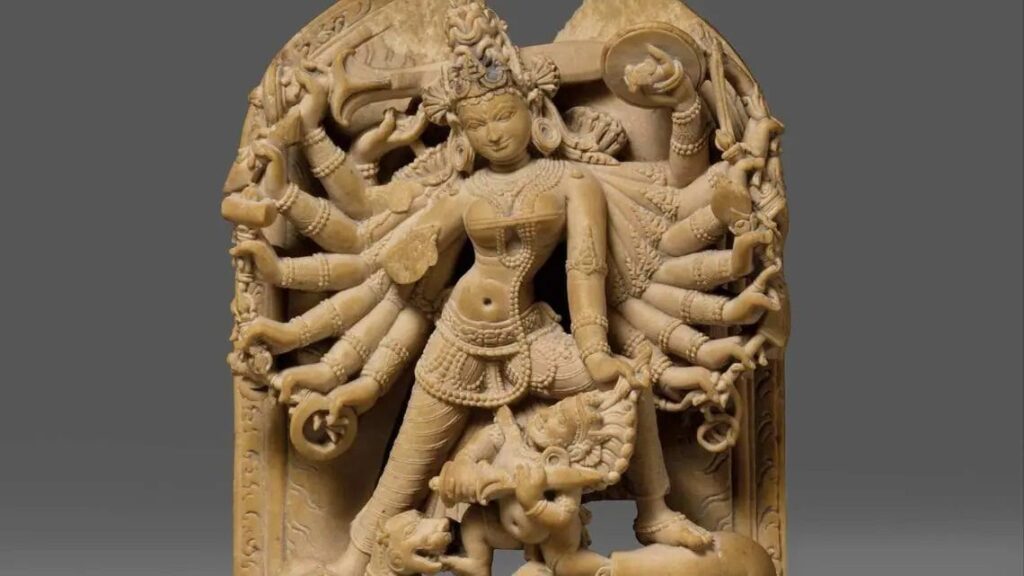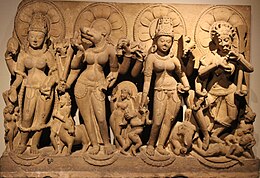The Shakti cult in Odisha is a manifestation of the reverence and worship given to the goddess Shakti or Devi, the Divine Feminine. This ancient tradition is deeply ingrained in Odisha’s culture and has played a significant role in shaping the religious beliefs and practices of the people.
The word Shakti literally means “power” or “energy,” and it is believed that the entire universe is a product of this divine energy. In the Shakti cult, Devi is regarded as the ultimate source of cosmic energy, and devotees seek her blessings for protection, prosperity, and liberation from the cycle of birth and death.
The roots of the Shakti cult can be traced back to the ancient times, and it has evolved over the centuries, assimilating various regional beliefs and customs. While there are numerous forms of Devi worshipped across Odisha, some of the most prominent ones include Samalai Maa, Mangala, Bimala Devi, Barala Devi, and many more.
The Shakti cult in Odisha is characterized by its elaborate rituals and festivals. One of the most important festivals dedicated to Devi is Durga Puja, which is celebrated with fervor and enthusiasm across the state. During this festival, beautifully crafted idols of Devi are worshipped for nine consecutive days. The last day, known as Vijaya Dashami, marks the victory of good over evil, with the idols being immersed in water in a grand procession.
Another significant festival celebrated in the Shakti cult is Kumar Purnima, which is dedicated to the worship of Kumarika or young girls. It is believed that by observing certain rituals and fasting on this day, girls can secure desired partners or husbands. This festival showcases the importance of female energy and the reverence given to young girls as a form of goddess.

Apart from festivals, numerous temples dedicated to different forms of Devi dot the landscape of Odisha. One such prominent temple is the Shri Jagannath Temple in Puri, where the goddess is worshipped as Bimala Devi. The temple attracts devotees from all over the country, who come to seek the blessings of Devi and experience her divine presence.
The Shakti cult in Odisha also has ties to various art forms and traditions. Odissi, one of the eight classical dance forms of India, is strongly rooted in the Devi worship tradition. The graceful movements and expressions of the dancers depict the feminine energy and power associated with Devi.
Furthermore, the Shakti cult has also influenced the crafts and handloom industries of Odisha. The intricate designs and motifs found in Odisha’s textiles, especially the famous Sambalpuri sarees, often depict the forms and attributes of the goddess.
The Shakti cult in Odisha is not merely a religious practice; it is a way of life for the people. It represents the resilience, strength, and empowerment of women and promotes gender equality. Devi is revered not just as a divine being but also as the embodiment of a mother, sister, and daughter.
In conclusion, the Shakti cult in Odisha is a significant aspect of the state’s cultural and religious heritage. It reflects the deep-rooted beliefs and reverence for the Divine Feminine in society. The vibrant festivals, intricate temples, and artistic expressions associated with the Shakti cult all contribute to the rich tapestry of Odisha’s traditions and spirituality.
You can read our another post on 7 Amazing health benefits of Ajwain

Write A FAQ For Shakti Cult in Odisha
What is the Shakti cult in Odisha?
The Shakti cult in Odisha refers to the worship of the divine feminine power or Shakti, which is believed to be the source of all energy and creation. It involves the worship of various goddesses such as Durga, Kali, and Saraswati, among others.
What are the main rituals and practices associated with the Shakti cult in Odisha?
The main rituals and practices associated with the Shakti cult in Odisha include elaborate festivals, daily prayers and offerings, meditation, and the performance of sacred dances known as Gotipuas. These practices help devotees connect with the divine energy and seek blessings for various aspects of life.
How does the Shakti cult influence the socio-cultural fabric of Odisha?
The Shakti cult has a significant influence on the socio-cultural fabric of Odisha. It plays a vital role in shaping the festivals and traditions of the region, such as Durga Puja and Kumar Purnima. Women often take on leadership roles in these festivals, which further empowers them in society.
Are there any specific temples or pilgrimage sites associated with the Shakti cult in Odisha?
Yes, there are several temples and pilgrimage sites associated with the Shakti cult in Odisha. The famous temples include the Biraja Temple in Jajpur, the Taratarini Temple in Ganjam, and the Maa Bhattarika Temple in Nayagarh. These sites attract devotees from all over India.
How has the Shakti cult evolved over time in Odisha?
The Shakti cult in Odisha has evolved over time, adapting to changing socio-cultural dynamics. While traditional rituals and practices continue to be followed, there is also a modern interpretation of the goddess as a symbol of female empowerment. This evolution has contributed to the cult’s enduring popularity and relevance in Odisha.
